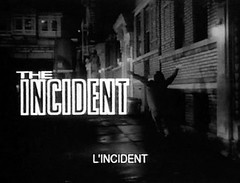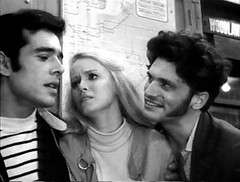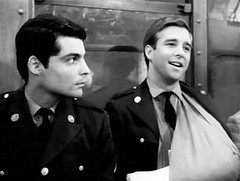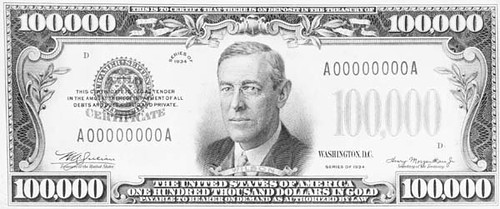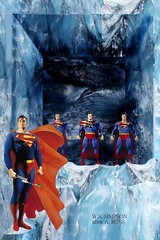A possible bumper sticker one may spot driving slowly, yes, slowly because one might miss the entire town if one blinks, along the abbreviated streets of Colma, CA.
To which a local resident may emit either a faint trace of a smile or a naughty smirk depending on his or her weather-borne disposition. And the
why will be explained down the line.
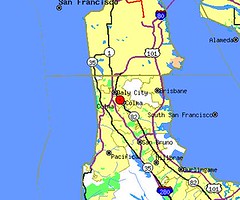
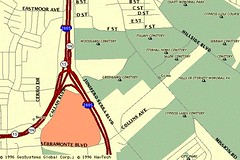
But the town’s official motto is a bit puzzling to any outsider, too. It reads:
It’s great to be alive in Colma.
Anyway, it is a postage-stamp-size town or city of 2.2 square miles, hemmed in from the north by Daly City and by South San Francisco from the south. Thus, when I was living in Daly City, I could actually boast that when I was jogging I was doing so across three cities, Daly City, Colma, and So. San Francisco.
In 1924, cemetery operators got together and decided to locate their “
operations” in one place. Thus, that intent gave birth to Colma as a necropolis. Presently, it has 17 equal opportunity cemetery sites, now euphemistically called memorial parks, along its borders; while the entire town or city itself is 73% zoned as such. Thus, it has proper burial sites for Greeks, Italians, Serbs, for Asians like Japanese, etc. And yes, also for different furry pets in a couple of pet cemeteries sharing side by side locales with the rest.
It is no surprise that the biggest landowners are a landholding company and of course, the Roman Catholic Church. Still this burgeoning town has about 1500 residents alive and doing well, but clearly outnumbered by their subterranean neighbors now numbering about 1.5 million.
And adding to the puzzlement of the place, Colma has a bit of a personality problem too, only to the outsider though. It is both a town and a city. And that is attributable to California Law, which makes town and city synonymous. The law states that a city is either one created by a charter or one created by general law. Colma is of the latter blend. Thus for its new spiffy image the signs in front of its municipal offices read: City of Colma, while the earlier engraved signs around town read: Town of Colma. Well, 1.5 million permanent residents pay no mind and will not be confused.
Like any town or city, Colma has its own government hierarchy to represent and rule over the 1500 residents, headed by a council. And this has been so even during lean times when the residents willing to relocate there were much less. One can imagine that the early “
mandatory” residents were those connected to the “
operations” – gravediggers, landscapers, flower growers, headstone makers. And maybe later, cremation technicians?
Not anymore, now somberly-hued residential buildings line the boundaries of some memorial parks, many facing the neatly-manicured and well-maintained lawns of the parks. Two elementary/middle schools are located within its borders. And many businesses are thriving there, too. Ubiquitous Home Depot has two sites. There are also a couple of shopping centers, and yes, many car dealerships still abound, tracing their origins to the early days of the place.
And yes, the most popular card room in the area named
Lucky Chances is located in Colma, owned and operated by a FilAm; and given its bountiful revenues, one can rightly surmise that these bounties are scattered somewhat within the local community in terms of taxes and local consumption expenditures.
Also, for the first time in memory a FilAm was elected to its suddenly-important council, in the person of
Joanne Del Rosario, a sister of former Philippine ambassador to the US Alberto Del Rosario. And this she won by the slimmest of margin, in a town where 25% are of Asian origins.
Because Colma is in California, it also shares in the surging real estate prices. A burial plot can cost from somewhere between $20,000 to $over 200K for a family plot.
While talking and viewing cemeteries and the dead may appear dismal and gross to many, it does offer the curiosity angles, for the curious and the typical tourist to the place because Colma is no different from any other place. And this is apart from the beauty offered by the very attractive landscape designs, the exquisitely built structures, the nice chapels and ultra-modern above-ground mausoleums.
It also offers the celebrity angle. Tucked in one of its many cemeteries is where the legendary
Wyatt Earp of the long-gone wild west is buried. And local legend and baseball icon
Joe DiMaggio is buried there too in a Catholic cemetery, marked by a beaten path made by the many baseball fans hereabouts. And the burial place of songstress
Tina Turner’s dog, reportedly buried wrapped in fur? Yes, one can find that there, too.
And personally, where my wife's late maternal grandmother and her father are also interred.
CreditsCredits
 Just learned today that our local community paper, Tracy Press, has on its website initiated a listing of community blogs in the City of Tracy. And this humble blog (including my spin-off blog, Hobbies and Pastimes) were included on the list, clearly because I include Tracy as my location in my Blogger’s profile.
Just learned today that our local community paper, Tracy Press, has on its website initiated a listing of community blogs in the City of Tracy. And this humble blog (including my spin-off blog, Hobbies and Pastimes) were included on the list, clearly because I include Tracy as my location in my Blogger’s profile.
